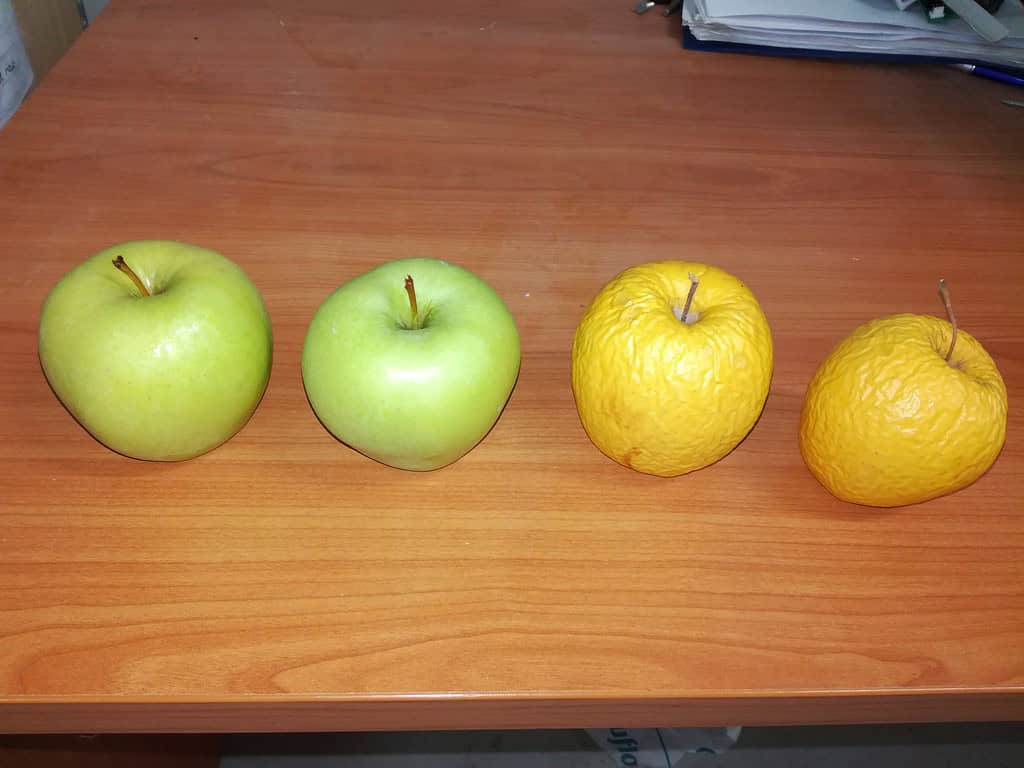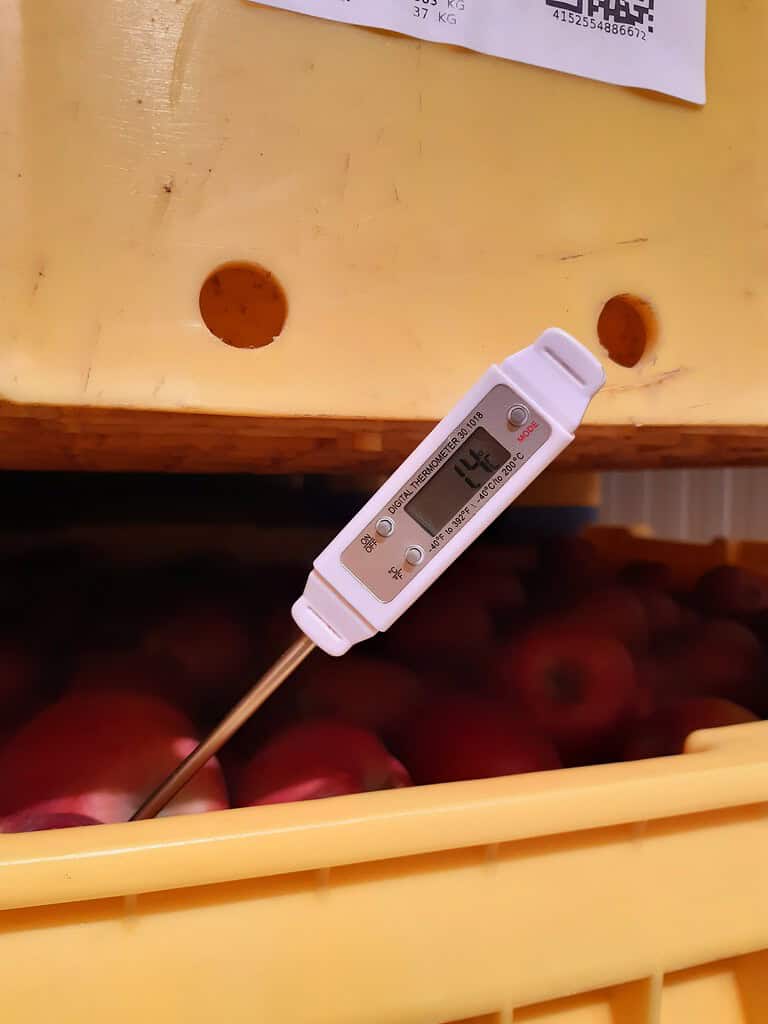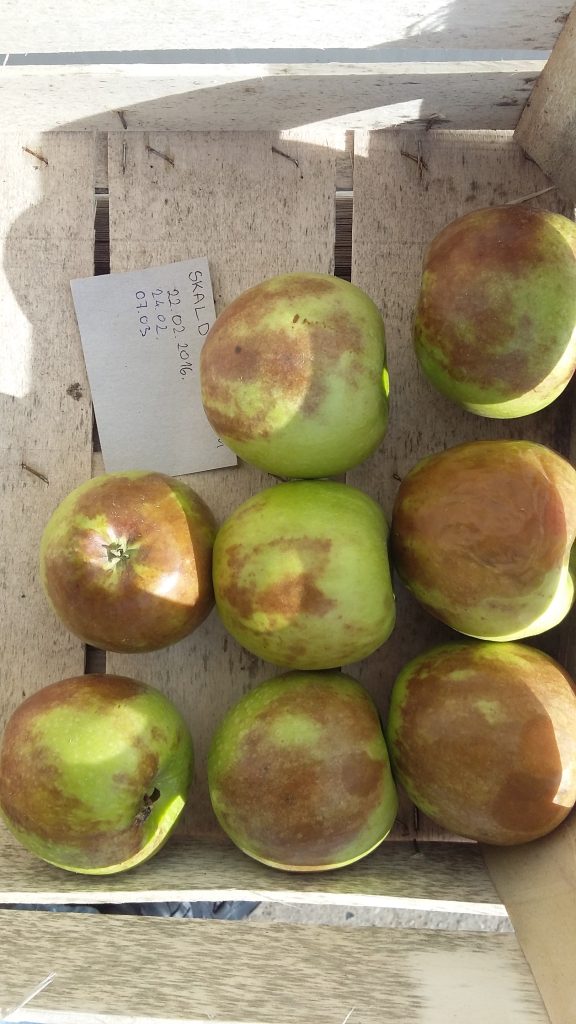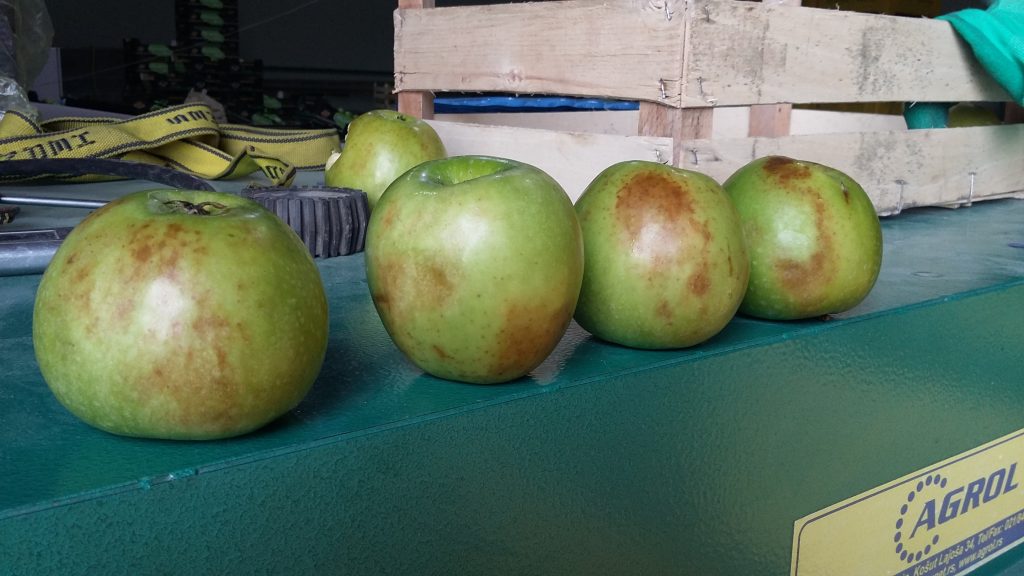STORING APPLES AFTER HARVEST




The apple belongs to the climacteric fruit species. In this group of fruits, ripening processes continue after harvest. The production of the aging hormone ethylene, which signals the fruit to ripen, persists. During this ripening process, aerobic respiration occurs, where oxygen is consumed and carbon dioxide is released. Based on this, if we want to preserve the freshness of apples for as long as possible, it is crucial to control the ethylene released by the apple itself and to reduce the oxygen concentration consumed by the apple during respiration and ripening.
Today, modern technologies such as ULO (Ultra-Low Oxygen) chambers and 1-MCP-based preparations are available. These technologies lower oxygen levels in the chambers and prevent ethylene from binding to receptors in the apple. By controlling these parameters, we can maintain the apple’s freshness for several months after harvest, making it competitive in the market throughout various times of the year.
If apple harvesting begins within optimal ripening parameters and all necessary treatments with fungicides to suppress fungi causing post-harvest storage diseases are properly applied, the fresh product must be handled correctly. It is essential to cool the fruit as quickly as possible. Within a few hours, the fruit must be placed in a chamber where a low air temperature has already been set. The highest quality and longest preservation are achieved if the fruit is cooled to a storage temperature below 2°C within 7 days after harvest.
When placing produce in cooled chambers, air humidity is a critical factor. It must exceed 85% to prevent water loss from the fruit, which would result in weight loss for the apples. This can be achieved using installed misting systems in the chambers or by moistening the chamber floor. Once the desired fruit temperature for long-term storage is achieved, oxygen levels are reduced. Modern ULO cold storage facilities can control the atmosphere in which apples are stored, maintaining an extremely low oxygen concentration and elevated carbon dioxide levels. If long-term storage parameters are set on time, the apple can significantly slow aging processes and remain fresh and attractive to consumers for up to seven months after harvest, depending on the variety.
An essential part of modern apple storage technology is a preparation containing the active substance 1-MCP (1-methylcyclopropene). This substance belongs to the group of plant growth regulators and aims to slow down the respiration process, the primary process stimulating apple ripening. This occurs because, after application, 1-MCP binds to ethylene receptors, preventing the natural aging hormone from entering the fruit’s metabolism and stimulating ripening.
Finally, all producers must be aware that cold storage is a tool for maintaining apple freshness. However, most physiological damages to the fruit, such as bitter pit, occur due to inadequate handling of apples in the orchard during production. This primarily refers to quality production where yield can be properly regulated through pruning and thinning models and by applying integrated fertilization of apples, aiming to balance all essential nutrients. When the apple is adequately nourished, the likelihood of bitter pit is minimized, and the fruit’s ability to retain firmness and color demanded by the market for extended periods is significantly increased.
